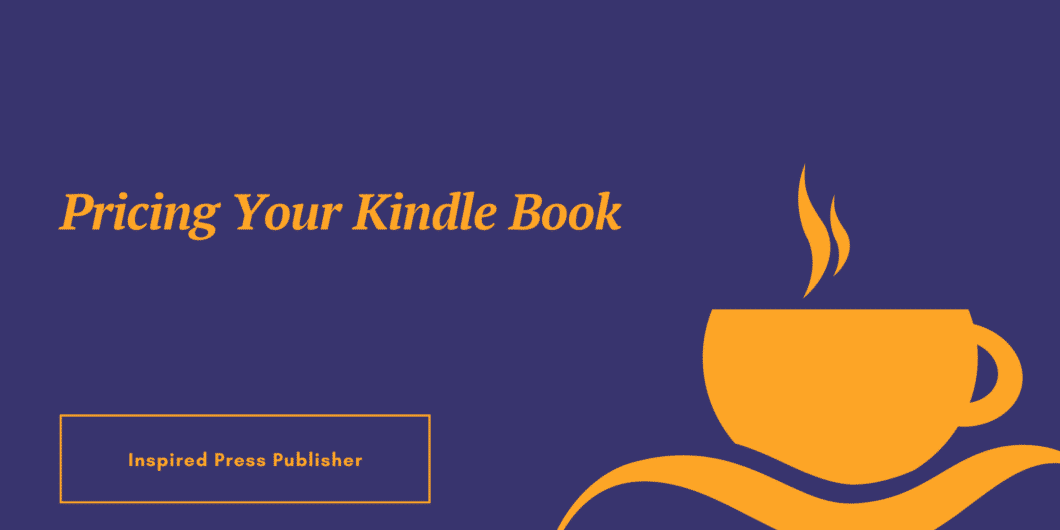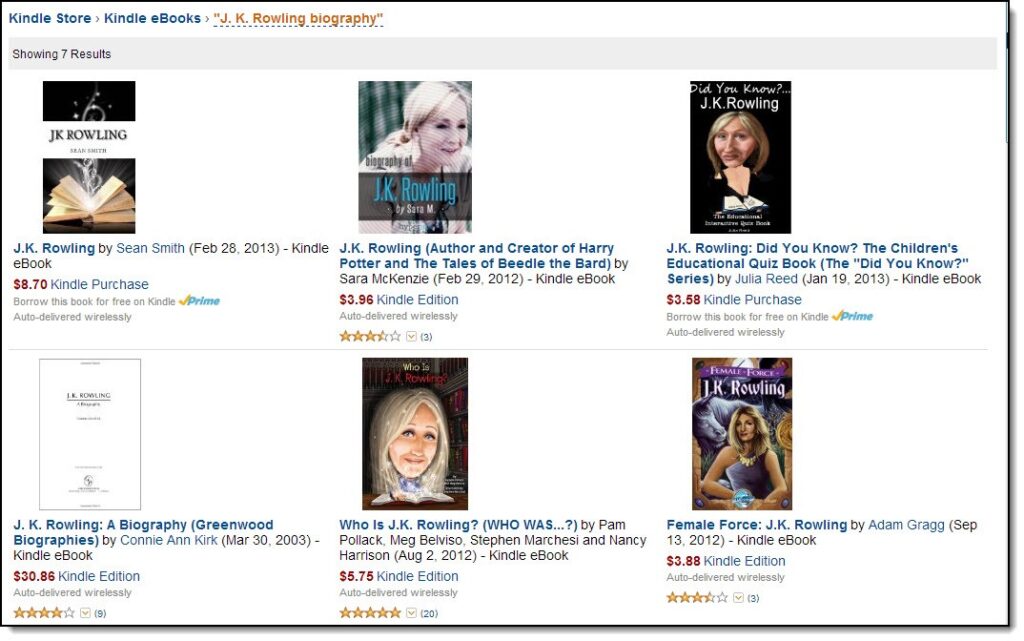Pricing Your Kindle Book

What is the pricing range, and what seems to be the best pricing for your kindle book? That depends on whether or not you’re more interested in cash sales or gaining exposure/subscribers.
When to Offer Your Book for Free
If your goal is to use your Kindle eBook to attract subscribers to your website and other offerings, or branding is more of a priority than sales, opt in for the KDP Select program. People on Amazon Prime will be able to borrow your book for free, but the aim is to garner reviews and ratings here. Keep in mind though, that you can’t publish it anywhere else if it is enrolled in KDP Select.
Do check the KDP Select terms, however, since Amazon is apparently in the process of changing its algorithm for KDP Select. People are noticing delayed results, so if you are enrolled in KDP Select, wait at least a week before you start promoting it.
How to Set Your Price
But you didn’t write your book just to give it away. What do you set the price at for everyone else who isn’t enrolled in Amazon Prime?
- Examine the pricing range among the top sellers in your broad niche and specialized exact niche
- Come up with the ballpark price range (e.g. $2.99 – $18.80)
- Factor in:
- Your status – are you a new author? One with a modest following? A celebrity regularly photographed by the paparazzi?
- Your topic’s popularity – is it trending right now? Are you ahead with breaking news for that niche? Do you have material on a celebrity that is red hot right now? Will your book change the world? Change peoples’ lives?
- Your book’s originality – Are you really saying something new and exciting or regurgitating the same thing as your competitors? What edge does your book have? What will excite people? Make your book irresistible?
- Your cover photo, Title and Sub–Title (if you have one) – Yes, these factors really do contribute enormously to your Kindle sales appeal. (Your description and keyword use matter too, letting people know how much your book will be worth emotionally, in perceived value.)
Set your price based on these factors and how many of them swing in your favor – not on how “new” you are as an author.
Case Study:
After all, if you have managed to score a series of exclusive interviews with J. K.. Rowling, you can automatically set your book to a higher price range. Here’s how you would research your pricing.
Looking at biographical Kindle material on Rowling, for example, prices range from $3.98 — $30.86.

A quick formula is to throw out the highest and lowest prices and go with the middle one: In this case, pricing your book similar to the $8.70 offering.
For those who require empirical proof, let’s see how accurate that strategy is by following through with an analysis…
- We can see immediately that three of the offerings feature amateurish cover art and are most likely written on no exclusive material: Only what is commonly known. Always throw out amateurish-looking offerings, subtracting them from your pricing range.
- Checking out this assumption by examining each of these six books, we discover that “J.K. Rowling: Did You Know?” is indeed the sparsest of large-print quizzes; we suspect interesting only to nine-year-olds.
- “Female Force” surprises us by being an actual graphic novel – something so original it should have been promoted as such and referenced on the front cover. As it was, it managed to anger a reader who apparently isn’t capable of accepting the invitation to “Look Inside” at sample pages into an “I feel cheated, I wasted my money” review. A marketing mistake and an unfortunate front cover that is not up to professional standards, no matter what credentials the illustrators boast.
- Surprisingly, “Who Is J. K. Rowling? (WHO WAS…?)” is also heavily illustrated – not quite a graphic novel but one or more illustrations on every page. May appeal to a younger reader and should be marketed to such. The interior illustrations are professional, but the cover unfortunately looks like a bad caricature.
- J. K. Rowling: A Biography (Greenwood Biographies) expects us to know that Connie Ann Kirk has written several biographies for the Greenwood series. We didn’t know it, so we are severely unimpressed with the plain, white cover, which seems to say: “I’m so superior I don’t need to market myself”. Since there is also no “Look Inside” preview, and a hefty price tag – $30.86 – this one goes out the window, un-purchased and untouched.
- Sarah M.’s biography impresses us with a professional, strong cover and a clear, simple title (very large, so we are in no doubt who the book is about). A preview shows us it’s a decent book, well-written though there are no other claims to fame on the author’s part. The three reviews, however, all mention the brevity of the book. One even calls it “an article.”
- We are more impressed with Sean Smith’s biography. He is an accredited, well-known “acclaimed celebrity biographer” – and that’s mentioned in the book description. The cover and title are professionally produced. His reason for writing the book, given in the Foreword preview, goes beyond mere celebrity fandom. It promises to be an interesting read.
But what does this have to do with your book?
It’s very simple: If you had written a book of actual interviews with J. K. Rowling, you would measure your book against the others and ask yourself: “Which one is my book most like? Are all my elements in harmony, like Sean Smith’s? Do I have any huge shortcomings, like the fact that Sarah M.’s is seen as “article length”? Have I warned people what to expect? Have I got a really strong, appropriate cover and title? Does it look professional, like a “real book?” Did I feel sure and confident arranging the interviews and inserting my commentary? Has anyone else in this little “J. K. Rowling biography” sub-niche provided actual material in her voice?
You would then decide to place your book within a $7.77–$27.77 range, depending on how perfectly you think your book checks out and displays.
Then you would promote the heck out of it.
Finally, you would see how well it does, and make notes so you can be even more clear on your pricing with your next Kindle offering.
Moral: Pricing is not an exact science, though many factors such as the ones above will affect your success. When in doubt, do what we first did – pick a price that is neither in the lowest range nor the highest. And don’t waste too much time analyzing the competition.
P.S.
Remember, when setting your price: Amazon takes between 35%–75% Royalties, depending on the price of your book.
